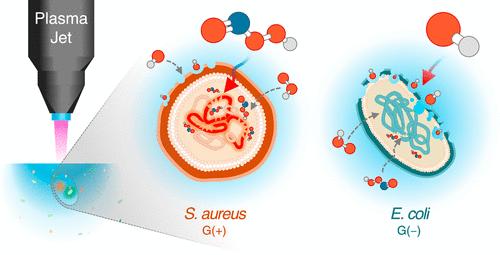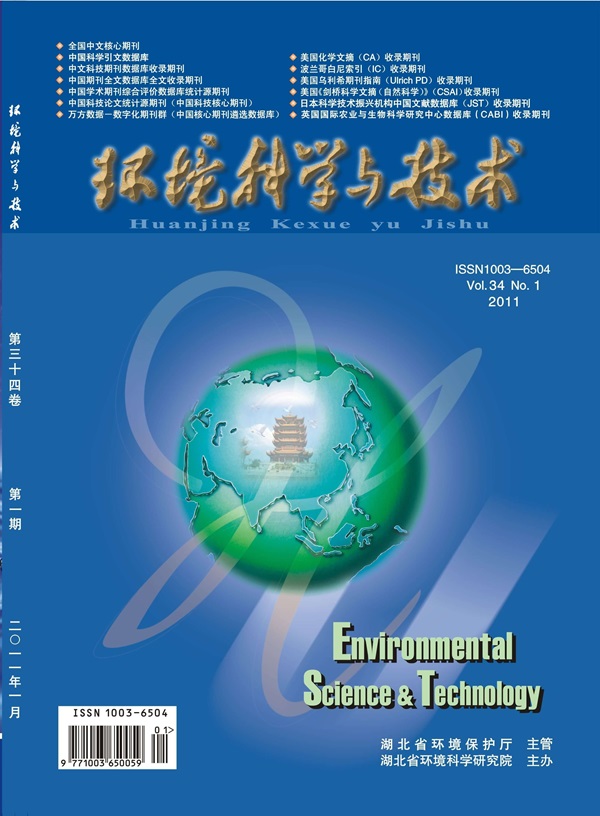Different Inactivation Mechanisms of Staphylococcus aureus and Escherichia coli in Water by Reactive Oxygen and Nitrogen Species Generated from an Argon Plasma Jet
IF 11.3
1区 环境科学与生态学
Q1 ENGINEERING, ENVIRONMENTAL
引用次数: 0
Abstract
The atmospheric pressure plasma jet (APPJ) is a promising technology for inactivating waterborne pathogens by generating diverse reactive species under ambient conditions. However, uncertainties regarding the bacterial inactivation mechanisms persist due to varying findings in prior research. This study aimed to clarify the inactivation mechanisms of two representative bacteria, Staphylococcus aureus (S. aureus, Gram-positive) and Escherichia coli (E. coli, Gram-negative), using an argon-based APPJ (Ar-APPJ) system in a controlled medium, primarily deionized water. We identified several reactive oxygen and nitrogen species (RONS), including hydrogen peroxide, peroxynitrous acid/peroxynitrite (ONOOH/ONOO–), hydroxyl radical (•OH), and hydroperoxyl radical/superoxide radical, and evaluated their roles in bacterial inactivation. Inactivation experiments and quantification of suspected RONS revealed that ONOOH was the primary lethal agent for S. aureus, while •OH predominantly inactivated E. coli. Assessment of cell membrane integrity and intracellular RONS levels showed that E. coli, with its thinner cell wall, was more vulnerable to surface damage caused by •OH. In contrast, for S. aureus, with its thicker cell wall, intracellular attack by penetrated ONOOH, being significantly more diffusive than •OH, was more effective, as •OH alone could not induce sufficient surface damage. These findings advance our understanding of bacterial inactivation by the Ar-APPJ and provide valuable insights for designing effective water disinfection strategies utilizing this technology.

氩等离子体射流产生的活性氧和活性氮对水中金黄色葡萄球菌和大肠杆菌的不同失活机制
大气压等离子体射流(APPJ)是一种在环境条件下产生多种活性物质灭活水传播病原体的技术。然而,由于先前研究的不同发现,关于细菌失活机制的不确定性仍然存在。本研究旨在阐明金黄色葡萄球菌(金黄色葡萄球菌,革兰氏阳性)和大肠杆菌(大肠杆菌,革兰氏阴性)两种代表性细菌的失活机制,采用氩基APPJ (Ar-APPJ)系统在受控介质中,主要是去离子水。我们鉴定了几种活性氧和活性氮(RONS),包括过氧化氢、过氧亚硝酸盐/过氧亚硝酸盐(ONOOH/ONOO -)、羟基自由基(•OH)和氢过氧自由基/超氧自由基,并评估了它们在细菌灭活中的作用。对疑似RONS的灭活实验和定量分析表明,ONOOH是金黄色葡萄球菌的主要致死剂,而•OH主要灭活大肠杆菌。细胞膜完整性和细胞内RONS水平的评估表明,大肠杆菌细胞壁较薄,更容易受到•OH的表面损伤。相比之下,对于具有较厚细胞壁的金黄色葡萄球菌,穿透ONOOH的细胞内攻击比•OH弥漫性明显更强,更有效,因为仅•OH不足以引起足够的表面损伤。这些发现促进了我们对Ar-APPJ对细菌灭活的理解,并为利用该技术设计有效的水消毒策略提供了有价值的见解。
本文章由计算机程序翻译,如有差异,请以英文原文为准。
求助全文
约1分钟内获得全文
求助全文
来源期刊

环境科学与技术
环境科学-工程:环境
CiteScore
17.50
自引率
9.60%
发文量
12359
审稿时长
2.8 months
期刊介绍:
Environmental Science & Technology (ES&T) is a co-sponsored academic and technical magazine by the Hubei Provincial Environmental Protection Bureau and the Hubei Provincial Academy of Environmental Sciences.
Environmental Science & Technology (ES&T) holds the status of Chinese core journals, scientific papers source journals of China, Chinese Science Citation Database source journals, and Chinese Academic Journal Comprehensive Evaluation Database source journals. This publication focuses on the academic field of environmental protection, featuring articles related to environmental protection and technical advancements.
 求助内容:
求助内容: 应助结果提醒方式:
应助结果提醒方式:


